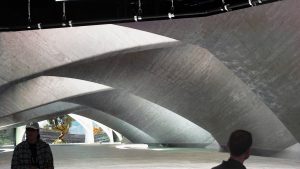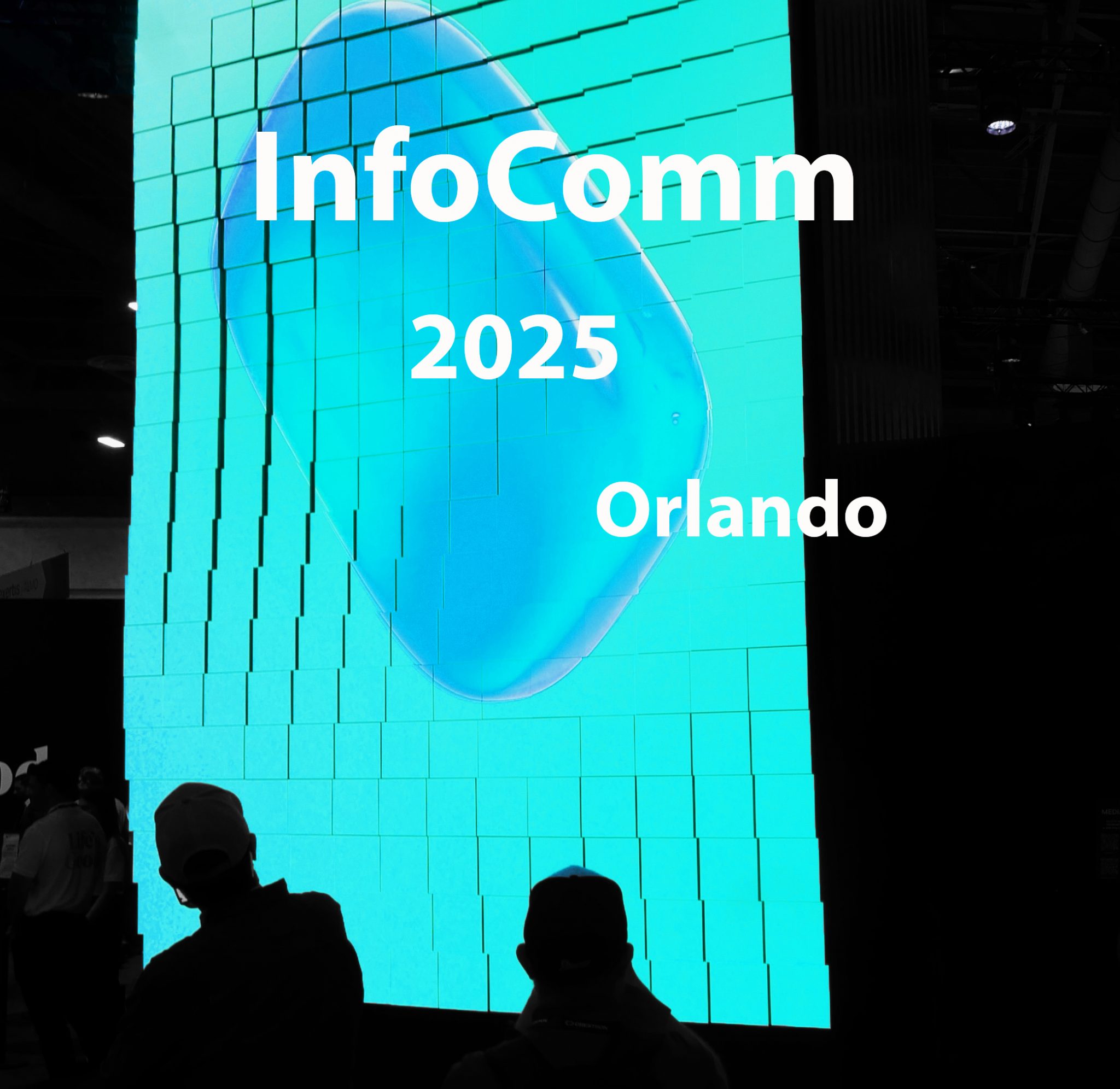
By David Keene
June 2, 2024 – If you follow analysis of what’s driving pro AV, this time of year it’s all about InfoComm. What will we see at the summer show – the new gear, and the trends behind new product development? But I can think of no year in long history of the InfoComm show that’s had me thinking first about the market itself and the gear later, than this year. While still exhibiting healthy growth, why does the pro AV market feel different? Let’s start at a 40,000 ft view of the market.
A number of the big “trends” in the AV integration market this year are what I’d call perennial issues: shrinking margin on AV gear, shortage of skilled labor, and the often shifting position of AV in the larger IT universe. Can we keep calling them “trends,” given that we’ve been doing that for 20 years? Each year they manifest themselves a bit differently, but they seem baked into the market. Are they? How do you work around them? I’ll answer that by addressing the technology/marketing dilemma that both stems from those trends and adds new challenges. That dilemma, or better said the crossroads at which AV integrators and gear providers stand today, is what Sean Wargo, the head of market research at AVIXA, describes as a “volume vs. value” dilemma in the corporate AV market. And it’s not an economist’s academic exercise, in fact it leads directly to what you’ll see – if you look in the right places – on the show floor at this year’s InfoComm.
You can see Sean and Peter Hansen of AVIXA talk about the corporate market in 2024, here. I’ll let those economists speak for themselves – it’s well worth checking out their conversation.
Here’s my take on the volume vs. value debate as we head to InfoComm – not just for the corporate vertical but for most of the verticals. At the heart of the dilemma – and it’s been so in many tech-based industries for a while – is the simple question: to increase revenue for your business, can you count on more sales volume (especially if your margin is low, or even shrinking, on each item sold), or should you aim for the increased value you could provide your customers with higher/more unique value or value-adds that would allow you to maintain or hopefully increase prices on goods or services? More volume, or more value?
Answering that is tricky, because in a growing market (the pro AV market in this case) you can increase your sales even if your market share is flat or slightly shrinking, if the “pie is getting bigger.” (It is.) And beyond that conundrum, AV demand dynamics are changing. Many are asking, has some of the “magic” of big robust AV systems faded? A bit: and we are not saying that AV systems are less spectacular for the end user. That’s not a problem. But many AV integrators feel that for much of their current or potential customer base in the corporate vertical they’re losing their status as the providers of AV “magic” that’s complex enough to design and install that neither the end user nor IT-type installers can do it. This especially applies to UCC, with the platform-based semi-commodification of conferencing and collaboration.
Commodification is partly the result of market growth and success. Customers today can do collaboration with modest investment. Yes, they’re doing it, more and more, on “platform-based rooms” i.e. MS Teams rooms, or collaboration rooms/offices that have at their core relatively simple web collaboration platforms such as MST, Zoom, Google Meet – and various allied offerings such as Cisco Room Kit and other room kits. Is it all collaboration with the highest level display and audio ecosystems? No, but looking at the bright side all those savvy users are growing the market for us – it’s now up to us to position our companies to benefit from that growth not be profitability-challenged by it.
Today, many end user companies, or schools, or civic organizations, or houses of worship, can now more easily source or manage not just a basic or not-so-basic platform-based AV collaboration stack, but also simple digital signage systems, or meeting room presentation systems either on their own or with less pro AV integration help. And as we have more ecosystems that are easier to deploy and manage, it’s now easier to swap out manufacturers’ products in those systems – good for the consumer, good for addressing supply chain disruptions when they happen, but more challenging for the sales goals of AV equipment providers. Other parts of the equation are: the cost of AV displays have come down. And commissioning and then monitoring/maintaining an AV system is easier – especially with more AVoIP ecosystems, as AV gear is on an IT network of some sort and therefore more easily managed all through the process. (The latter, i.e. network management, with the caveat that there’s nothing simple or easy about what will be the number one challenge going forward: network security. AI will help with that, but AI will also help bad actors who’d love to hack IT networks through the side door of that shiny AV gear.)
All of those forces are allowing the market to keep growing. But now we circle back to the “perennials”: in many product categories slim margins persist on hardware despite growing demand. High demand, yet you can’t raise prices. You don’t need to fish your ECON 101 textbooks from the basement and revisit price elasticity of supply/demand equations. In our world, elasticity dynamics tie to the fact that many pro AV displays, and audio gear, share production and pricing dynamics with millions of consumer products; and many AV product categories share platforms with IT products. Both set of dynamics drive prices down even as features expand – because large volume manufacturers in either the consumer electronics or IT camps can ride the volume wave and get by on low margins. Another perennial: with IT being a larger universe than AV, not only do IT departments tend to take over procurement of AV goods and services, but our skilled AV tech labor (and our potential labor i.e. smart, tech-leaning students) tends to migrate to the IT side, leaving us with perennial labor challenges.
Bottom line: market growth and lots of upside in the addressable market of many verticals today, but anxiety about all the above. There’s no easy answer to the “volume or value” question – and in fact we have many players on both sides of that divide. I’ll leave the “volume” side to others. The volume side is largely about trying to mimic the size, growth, and standardization habits and dynamics of the IT market, not a bad idea in the long run – but as the great economist John Maynard Keynes famously said to the old school economists, “in the long run, we’re all dead”. It’s axiomatic in today’s economic debates in G7 and EU countries that “we’re all Keynesians” now, i.e. we need to take measures now to stimulate demand not wait for macro and business cycles to play out. But I’ll refrain from more economic pronouncements Keynesian or otherwise. And I’ll pivot from macro to micro, and look at InfoComm in Orlando for products and services that lean to the value side of the equation:
• It wouldn’t be InfoComm without spectacular display products. LCD displays are in the middle of a recent resurgence, with some platform advances and with strong demand in the digital signage arena especially. Keeping up pretty well with emissive display platforms like OLED (and even direct view LED), new gen LCD panels from some providers have really improved recently in terms of black levels, contrast ratio, color gamut, and surface element improvements such as non-glare. That being said, much of the excitement around LCD panel performance is about the LCD makers meeting new demand for better connectivity and network security features. And as a sub story of the external media player vs. SoC “debate” in digital signage (quotation marks because it’s an often misunderstood issue), it’s more important than ever to look at a display line and ask how it plays more friendly with the many different CMS and other software options out there. Yes I still ask about LED backlight arrays and color space these days, but I ask just as much about API’s that allow better integration of displays – SoC or not – with any and all CMS for digital signage, and increasingly with AI tools such as data analytics (often working with smart edge devices such as sensors or cameras to deliver audience metrics).
Digital Signage has been the most software-driven of pro AV technologies for a while. Some years back this manifested itself in the fact that CMS platform providers often even sourced big jobs from big end users, then brought display manufacturers and AV integrators onto the job. Today, it manifests itself more on the technical side than on that marketing side: digital signage ecosystems (and increasingly much of AV) are more software-centric now, with better API’s so software can better sync to and play more friendly with other software. That’s the future of content, no matter what displays you’re using.
And I ask, increasingly, when looking at display product lines, how new generation device management systems allow you to get the screens installed and commissioned more easily. That category, device management for digital screens, is hot right now. Be sure to sort out, when you’re shopping for displays or other pieces of a digital signage package, what device management the CMS can do, if any, vs. what is best left to new dedicated device management tools that are independent of the CMS. Some top integrators now prefer the latter, partly because most CMS-provided tools are not so much device management as just monitoring of some sort.
• And you need to be on top of the new and more strict protocols for network security that AV displays are starting to face in all IT networks, and have display manufacturers explain to you how their offerings can help the digital signage or enterprise-wide display ecosystem stay locked down to fend off network security threats. Hybrid workers make it even more tricky. Balancing access and security needs, how do you manage local workstations and remote workstation connections over an IP infrastructure? (And do all that, while fitting into customers’ new sustainability mandates.)
• Direct view LED – the party continues, with prices coming down to earth, and with new configuration options. Two trends in micro LED are all-in-one packages that include mounting, power supply, and control systems; and virtual production applications. The former is about making LED (almost) as easy to install as flat panels. Virtual production is a big trend that started in the movie and TV production world but now has entered pro AV. With LED walls, you create virtual sets for a broadcast setting or a movie/TV/streaming production – and yes, for corporate or educational productions. Virtual production is a term that refers to different technologies. At one level it lets you lose the green screen and create your backgrounds on the shoot itself using LED walls as content screens for your sets. Another use is allowing you to bring in remote presenters and complex video to a collaboration session or other live event. At InfoComm 23 in Orlando, did you see all the LED walls being used to create virtual sets? At InfoComm 24, ask those LED and other gear providers how you can harness and scale that technology for your needs in installed AV and/or live events for your corporate or EDU users.
 Only a few industry-leading LED providers achieve the much better resolution (pixel pitch), black levels, contrast ratio, reduced reflectivity, energy efficiency, and media server-friendly operation needed for the best production environments. Beyond that, if you’re starting to look at LED for virtual production, make sure the provider has the track record in both the creative world (movies, broadcast) and the pro AV world to back up the product, service, and software needed to get the job done. For a good example of several companies (that also happen to be exhibiting at InfoComm) working together to provide a good virtual production ecosystem, check out this conversation, here.
Only a few industry-leading LED providers achieve the much better resolution (pixel pitch), black levels, contrast ratio, reduced reflectivity, energy efficiency, and media server-friendly operation needed for the best production environments. Beyond that, if you’re starting to look at LED for virtual production, make sure the provider has the track record in both the creative world (movies, broadcast) and the pro AV world to back up the product, service, and software needed to get the job done. For a good example of several companies (that also happen to be exhibiting at InfoComm) working together to provide a good virtual production ecosystem, check out this conversation, here.
Beyond high performance LED screens, for virtual production you might need live content rendering engines feeding your capture cameras to a format-nimble media server with a UI that to run doesn’t require poaching some techs from Industrial Light and Magic or Lucasfilm. And these new tools can be for video production for later broadcast, but also for live events. You’re now in the realm of scaling cinema tools for pro AV display ecosystems – exciting stuff, and it’s the future of all things video. Get used to talking about real time FX, set extension, or content workflow, not just the pixel architecture and performance specs of display products. Have you been mildly confused about referring to LED? LED screens? LED walls? When you’re at InfoComm this summer if you’re in the right booths you might hear about LED volumes. Don’t know that means? It has nothing to do with the “volume vs. value” debate. It’s about the future of video production. InfoComm is a good place to find out why.
Continuing with the theme of bringing broadcast tools to pro AV, a hot category today is AI-enabled PTZ cameras. If you’re newish to the category PTZ means pan, tilt, and zoom, a cinema/broadcast term that means cameras that follow the action – up, down, sideways. The new twist is using AI to let the camera more automatically follow a presenter for example. That’s called auto-tracking, and it can be movement-triggered, or voice-triggered (when used in conjunction with new gen “virtual microphone” software products), or at the highest level controlled by other cues or scripts/timelines. It means that now you can get higher production values on live streams and recordings and in collaboration sessions. And in many scenarios you don’t need a camera operator. So not only can one camera get you into broadcast level technique, even more promising is doing multi-camera. Think about that – using a multi-camera set up a la movie and TV production, for corporate meetings. It’s coming. As you look at PTZ cameras at InfoComm – many of them with much touted AI functionality – a great question to ask is whether the camera and the companies other streaming/broadcast ecosystem can really enable TV production-like multi-camera (not just PTZ auto-tracking) with just one human camera operator (or none). Does the system allow custom camera presets? Can you control both cameras and recording devices from one interface? All PTZ cameras are not created equal, when it comes the ability to do true multi camera. Ask why, at InfoComm. It’s another question that might help you get past the commoditization of UCC, a few miles down a smoother road if you’re heading toward more value not more volume to win in the AV market.
Market Trends – Gensler Spotlight
Get Our Newsletter
Sign up at the right to get industry analysis, curated data, and information (you can actually use) from the digiDaybook Newsletter.



